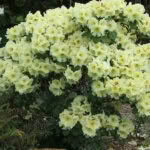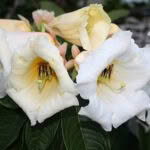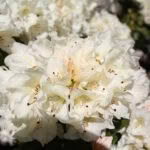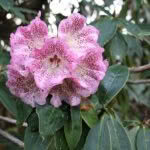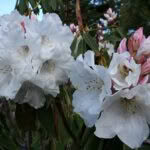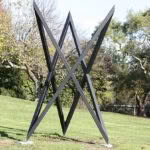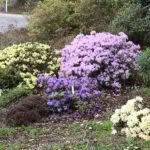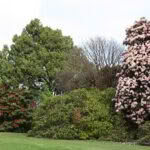One for the rhodo: Rhododendron lovers fill Heritage Park with plant trials, rare species and thousands of blooms
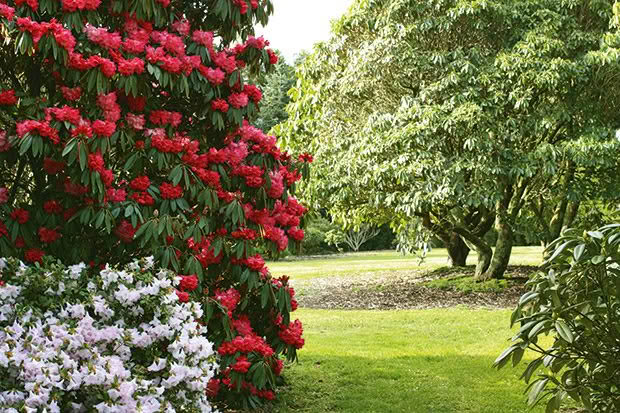
Rhododendron arboreum x ssp. cinnamomeum (top) and R. ‘Cilpinese’.
An infatuation for genus Rhododendron keeps a park budding with rare shrubs, hybridization and thousands of blooms.
Words: Cari Johnson
As she faces her new 700-square-metre section in Te Kuiti, a quarter of the land she and husband Mike had at their former farm, rhododendron-fancier Sue Wagstaff’s head is filled with far more rhodos than could ever squeeze onto the lot. “There won’t be much lawn by the time I’m finished,” she says.
Sue isn’t too worried, though. As a long-time volunteer and former convenor at Heritage Park, a 4.5-hectare volunteer-run rhododendron garden in Kimbolton, there’s space aplenty for her wildest rhodo dreams. And dream she certainly does.
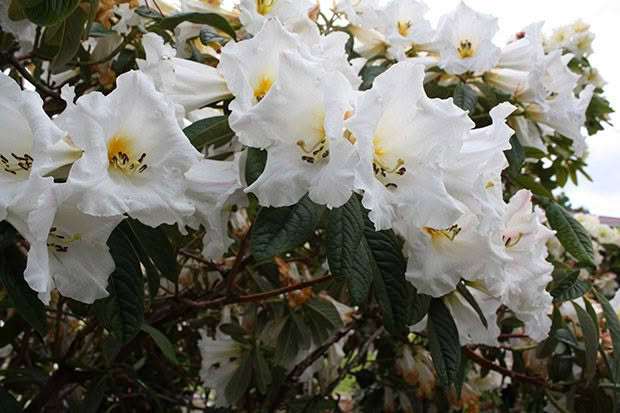
R. ‘Floral Fete’.
Once, back in the 1980s, Sue turned her backyard into a valley of alpine rhododendrons after seeing the endangered species in the wild in China. Unfortunately, she hadn’t anticipated that her low-altitude garden would be inhabitable for the poor things. “It took me three years to slowly kill the whole lot,” she says.
Failure makes success all the better because nothing is sweeter than when the early blooming rhododendrons at Heritage Park practically burst out singing of springtime with their bright, bell-shaped flowers. At 480 metres above sea level, the Manawatū parkland is a mecca for the altitude-loving genus Rhododendron.
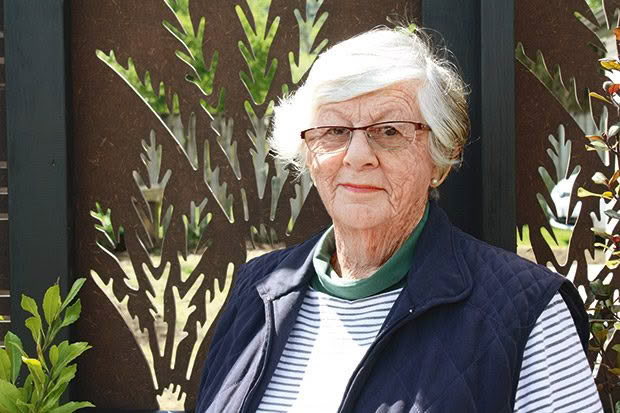
Long-time rhodo enthusiast Sue Wagstaff.
“Many specialty nurseries are closing, so the list of rhododendrons available to the public has reduced. We’re trying to promote them and conserve those not in commerce,” says Sue.
For the amble-and-admire-the-flowers types, Heritage Park fits the bill with ponds, lawns and more than 2000 rhododendron species, hybrids and azaleas. This place looks like a garden, smells like a garden, but offers even more for the rhododendron-minded. In 1969, the bare site was purchased by the New Zealand Rhododendron Association (NZRA) to be its national site to grow, breed and trial plants.
- R. ‘Ben Moi Bessie’ was hybridised by the late Ian Gordon.
- R ‘Ian’s Delight’.
Today, the garden is a museum and laboratory of sorts. Volunteers drop botanical names with ease and help with decade-long trials that identify the best-suited rhododendron varieties for New Zealand. The park also highlights the work of “hybridists”, the green-thumbed types who create plants superior in scent, looks or robustness. More collector than horticulturalist, Sue leaves hybridizing to the science sorts. “When sowing a hybrid seed, you have no idea what you will get. Four or five of hundreds of seeds might turn out all right. Those plants can take anywhere from five to 20 years to flower.”
Getting involved with Heritage Park was a no-brainer for Sue and Mike when they joined the NZRA in the late 1970s — despite living nearly four hours away from Kimbolton. The Wagstaffs have been involved for decades, serving as chair (Mike) and trustee (Sue) after the garden became a charitable trust in 2006.
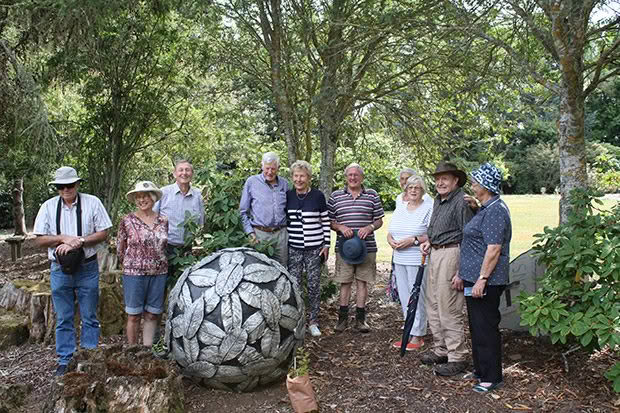
Left to right: Lindsay Davies, Mary and Neil Manning, Richard and Jenny Nanson, Mike Wagstaff, Joyce Prince, Sue Wagstaff, Jim and Diana Howard.
Dozens of volunteers and like-minded locals bring Heritage Park to life. Kimbolton arborists lend their mulcher each year to help clean up pruned branches and debris. One woman raised $1000 annually for the park from perennials she grew and sold in her spare time. “That was her contribution,” says Sue. “She did that for about 20 years.”
Sue believes Heritage Park is as important as it is pretty, which is why she and others aim to collect as many rare and hybrid rhododendrons in the park as possible. “The variety of these wonderful trees, shrubs and rhododendrons will diminish if we don’t try to preserve them,” she says.
RHODODENDRON HUNTERS
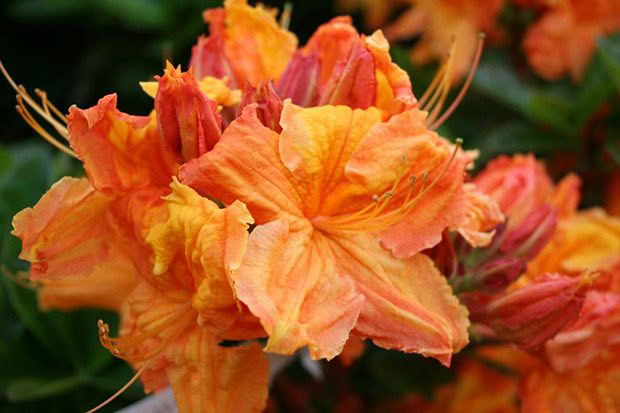
In Victorian times, rhododendrons were fashionable among wealthy landowners for their trusses of vibrant flowers and leaves. Few species made it to New Zealand with the first settlers from England, including the large hybrid ‘Sir Robert Peel’. Over the decades, rhododendrons were imported by those who could afford to visit English estates or by intrepid souls sponsored by gardens or organizations (such as the NZRA) to collect plant material and seeds from around the world. One notable “plant hunter” was Sue’s late uncle, Ron Gordon of Taihape, who trekked to China several times in the name of rhododendron collection. “It’s people like him who’ve preserved rhododendrons,” she says.
VISIT HERITAGE PARK
Heritage Park is open daily from daylight to dusk; it takes at least an hour to leisurely walk the grounds. Peak rhododendron flowering time is from late September to mid-December. Dogs and picnics are welcome at the park.
Love this story? Subscribe now!
 This article first appeared in NZ Life & Leisure Magazine.
This article first appeared in NZ Life & Leisure Magazine.
